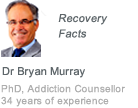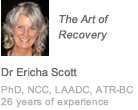Percocet Addiction
Percocet addiction is a growing problem among the active and young adult population in the United States. Percocet is one of the oxycodone derivatives (oxycodone + acetaminophen) and is available as a treatment for low to mid level pain relief and occasionally for severe pain, especially in the joints and back. Often used following a minor sports injury or muscle strain, Percocet is perceived as a pretty benign drug. It is far from benign and can be dangerous – there are a number of contra-indications for use and ignorance of these has led to a number of deaths.
Percocet– origin, issues and legal status
Percocet is available under a number of trade names including Endocet, Magnacet, Narvox, Roxicet, Tylox and Bp Percocet. It is made by mixing acetaminophen with oxycodone in an attempt to provide an effective pain relief medication that is less problematic than straight oxycodone. The combination is more suited to the more severe pain relief that many active adults require in today’s society, but there are a number of issues with Percocet:
- Percocet is highly addictive when taken for an extended period
- Contra-indications in people with the following conditions present adverse or even severe reactions:
Breathing disorders, especially asthma, COPD and sleep apnea
Liver disease or jaundice
Kidney disease
History of head injury or brain tumor
Epilepsy or other seizures
Hypotension
Stomach or intestinal disorder
Pancreatitis or Diabetes
Underactive thyroid
Addison’s disease or other adrenal gland disorder
Enlarged prostate
Spinal curvature
Mental illness
History of drug addiction
Alcohol addiction - Increased tolerance following prolonged use
Ocycodone is a controlled drug worldwide and Percocet follows similar status although it is commonly available on the internet through Canada and Mexico. Where it is controlled the penalties for misuse are severe:
- In America the drug is a Schedule II drug meaning that it is considered to have a high potential for abuse but that it has a currently accepted medicinal use, albeit with severe restrictions.
- In Canada restrictions are in place and penalties range from 7 years and a 10000 dollar fine to life imprisonment
- In the UK it is a class A drug which aligns it with heroin and crack cocaine and possession without a prescription is punishable with up to 7 years in prison
Percocet addiction: usage and effects
Percocet addiction usage is very similar to Oxycontin and the methods of abuse are also similar but less frequent:
- Orally by swallowing the tablets
- Inhalation by crushing the tablets into powder that can be sniffed or inhaled giving a quick absorption with similar effects as heroin and morphine – euphoria, lassitude and general numbness
- Injection with a suspension of Percocet powder in water
Some of the side-effects of Percocet abuse are the very effects that the addict desires, for example euphoria, numbness and the feeling as though the body is wrapped and protected, faintness or light-headedness. Other, less desirable side-effects are part and parcel of the drugs impact and include nausea and vomiting, convulsions, confusion and staggering, constipation, itching and sweating
Profile of a Percocet addict
- The majority of Percocet users have no problems with short term use, but others will have been using the drug for long term relief of pain from injury and will have developed a Percocet addiction.
- Most of the users of Percocet tend to be:
- Fit and active
- Young to middle aged
- Middle-class
- There are many abusers and addicts in the more rural areas of America where recreational abuse of Percocet falls under the ‘Hillbilly Heroin’ class alongside Oxycontin
- The drug is commonly abused in low-income and run-down areas of the inner cities, generally using stolen prescriptions and stolen drugs or ‘Doctor Surfing’ where a number of free clinics will be visited, one after the other, to get prescriptions for the drug either for sale or personal abuse
Treating Percocet addiction
The withdrawal effects of Percocet addiction are pretty much the same as those of Oxycontin, morphine or heroin:
- Cramps, tics and muscle spasms
- Sweating and yawning uncontrollably
- Diahorrea
- Runny nose and weeping eyes
- Depression and self-hatred
The physical withdrawal will be accompanied by a profound depression and self-hatred and a number of treatments are recommended for relief from the trauma of withdrawal:
- Counseling
- Low Impact exercise
- Low Impact Yoga
- Massage
- Acupressure
- Meditation – either in groups or alone
- Occupational therapy
As Percocet addiction is basically morphine addiction, all of the same stages of recovery and rehab need to be identified and arranged. Beginning with detox, then a rehab program with a variety of treatments and therapies designed to help the individual addict and their particular needs. Medical supervision during initial physical withdrawal is advisable as not only will the addict be suffering severe withdrawal side-effects, but the underlying condition for which they started taking Percocet may still be present. To attain and sustain an effective recovery an holistic approach is useful. Helping the addict to understand how they became addicted, and how to avoid the problem in the future.












